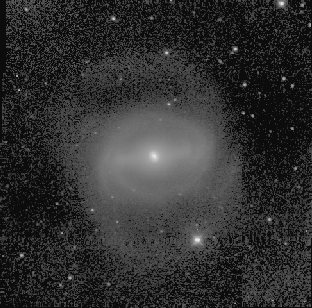


A comparison between a groundbased near-IR, 1.65 micron image of NGC 1433 (left, which took 3.7 hours of observing time to get with a 1.5-m telescope), and a 3.6 micron image of the same galaxy (right) obtained with the Spitzer Space Telescope (a 0.85-m telescope), in a period of 20 minutes or less. The reduced background and lack of atmospheric seeing allows greater depth of exposure in the Spitzer image, and also the detectability of more foreground stars.